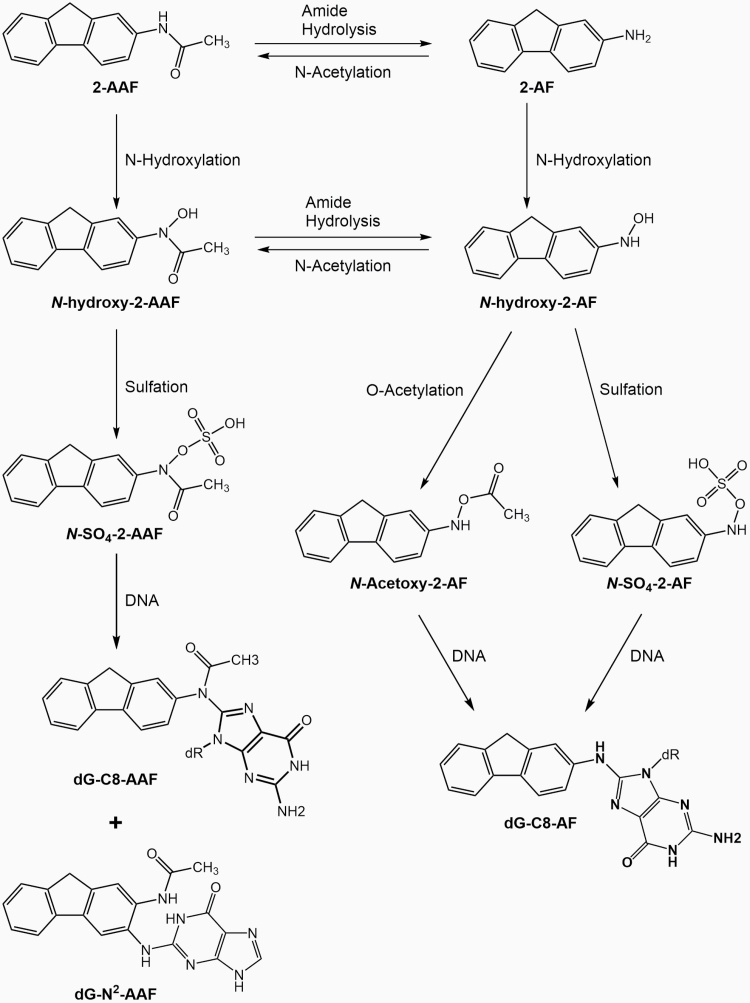Fig. 1.
Metabolism of 2-AAF. N-hydroxylation leads to the formation of the reactive metabolite N-hydroxy-2-AAF (N-OH-2-AAF). Amide hydrolysis and subsequent N-hydroxylation lead to formation of the highly reactive metabolite N-hydroxy-2-AF (N-OH-2-AF). Sulphation or O-acetylation of these metabolites leads to the formation of other DNA-reactive compounds as indicated in the scheme.

